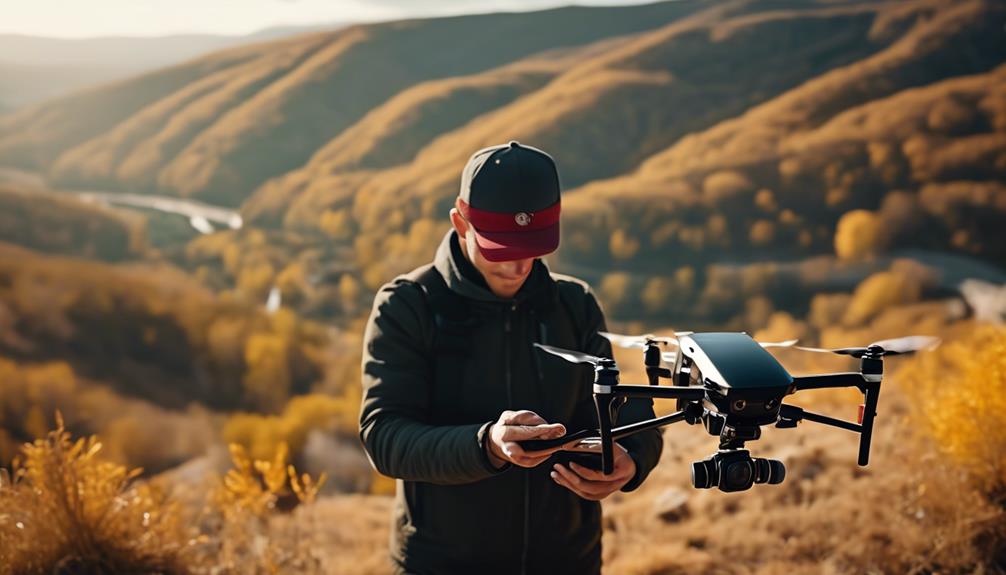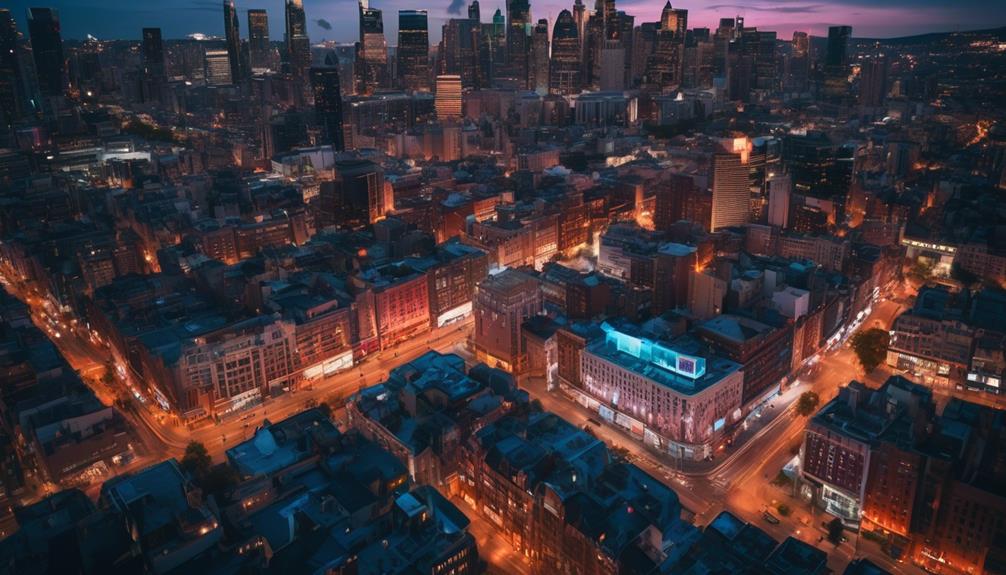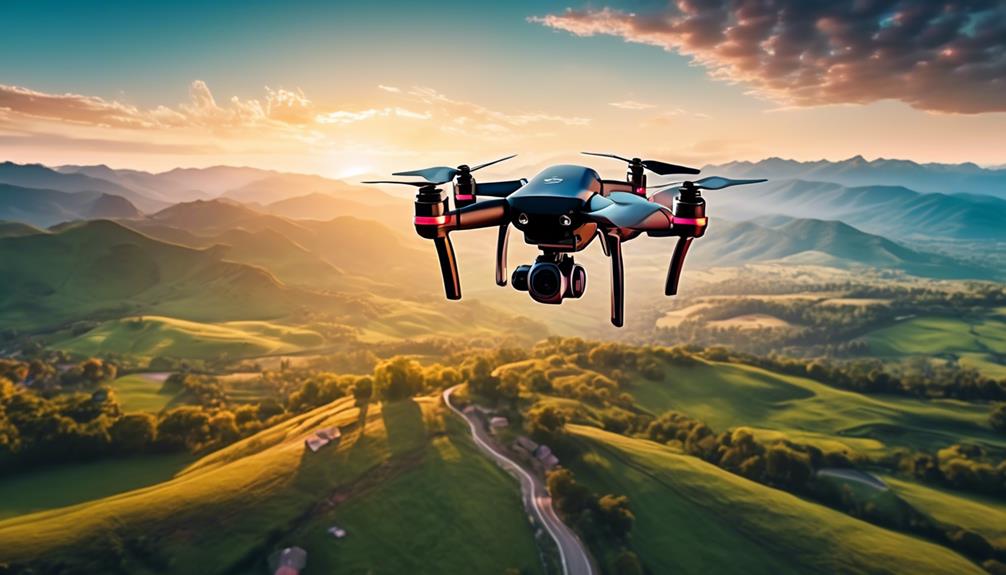Please note this post may contain affiliate links picked by me (Jay) that I have deemed may be of interest or relevant to you the reader of this.
These links do not affect the cost of the thing if you decide to purchase but i may get a little money if you choose to purchase.
For more information on my affiliate link policy click here.
As the saying goes, 'practice makes perfect.' Well, that might be true for some things, but when it comes to aerial and drone photography, there are a few essentials that can help novices soar to new heights.
From mastering the art of composition to understanding the ins and outs of post-processing, there's a whole world of knowledge waiting to be uncovered.
So, if you're ready to take your photography game to new heights, buckle up and prepare for an exhilarating journey filled with breathtaking views, creative challenges, and invaluable tips that will have you capturing stunning shots in no time.
Get ready to elevate your skills and unlock the secrets of aerial and drone photography novices.
Key Takeaways
- Familiarize yourself with drone regulations and flight rules to ensure safe and legal operation.
- Invest in high-quality equipment, including a stable drone, gimbal, ND filters, and extra batteries and memory cards.
- Experiment with composition techniques like the rule of thirds, leading lines, and unique perspectives to create visually interesting shots.
- Take advantage of lighting techniques such as adjusting camera settings, shooting during the golden hour, experimenting with backlighting, and incorporating light painting for creative and captivating aerial photographs.
Equipment
When it comes to aerial and drone photography, having the right equipment is absolutely essential. As a photography enthusiast, I understand the importance of having the right gear to capture stunning shots from above. So, let's dive into the world of essential gear and must-have accessories for aerial and drone photography.
First and foremost, a high-quality drone is the backbone of any aerial photography setup. Look for a drone that offers stable flight control, a built-in camera, and a decent battery life. Additionally, investing in a gimbal is crucial to ensure smooth and steady footage. A gimbal helps stabilize your camera, compensating for any movements or vibrations during flight.
Next, consider investing in ND filters. These filters help reduce the amount of light entering the camera, allowing you to capture well-exposed images even in bright conditions. They're particularly useful when shooting in the middle of the day or over bodies of water.
Another essential accessory is a remote controller with a built-in monitor or a compatible smartphone holder. This allows you to have a live view of what your drone's camera is capturing, giving you more control and precision when framing your shots.
Lastly, don't forget about extra batteries and memory cards. Aerial photography can drain your battery quickly, and having spare batteries ensures uninterrupted shooting sessions. Similarly, having ample storage space on your memory cards allows you to capture countless breathtaking images without worrying about running out of space.
Safety Guidelines
Now that we've covered the essential gear for aerial and drone photography, let's ensure your safety with some important guidelines to follow.
When it comes to flying drones, it's important to be aware of the drone regulations in your area. Make sure to check with local authorities to understand any restrictions or permits required for flying in certain locations. Familiarize yourself with the flight rules and regulations set by the Federal Aviation Administration (FAA) to avoid any legal issues.
Emergency procedures are another crucial aspect of drone safety. Always be prepared for unexpected situations. Have a plan in place for dealing with equipment malfunctions or loss of control. It's also important to have a clear understanding of the emergency landing procedures for your specific drone model. This will help you safely bring the drone down if you encounter any issues during flight.
In addition, make sure to fly in suitable weather conditions. Strong winds, rain, or fog can greatly affect the stability and control of your drone. Avoid flying in crowded areas or near airports to prevent any potential accidents or disruptions.
Composition Tips
Let's dive into some essential composition tips to take your aerial and drone photography to the next level.
When it comes to capturing stunning images from above, framing techniques play a crucial role. One technique to keep in mind is the rule of thirds. Imagine a grid dividing your frame into nine equal parts, and place your subject along these lines or at their intersections. This creates a sense of balance and visual interest.
Additionally, try experimenting with leading lines. Whether it's a road, a river, or a row of trees, these lines can guide the viewer's eye and add depth to your photographs.
Now, let's talk about creative angles. Don't be afraid to get low or high to capture unique perspectives. By shooting from a lower angle, you can make your subject appear larger and more dominant. On the other hand, shooting from a higher angle can provide a bird's-eye view, revealing patterns, shapes, and textures that aren't easily visible from the ground.
Lighting Techniques
As we soar through the world of aerial and drone photography, framing our subjects with the rule of thirds and experimenting with creative angles, we must now shed light on the importance of mastering lighting techniques. Capturing stunning images requires not only a skilled eye but also an understanding of how light interacts with our subjects.
Here are four essential lighting techniques to enhance your aerial and drone photography:
- Low Light Mastery: When shooting in low light conditions, such as during sunrise or sunset, it's crucial to adjust your camera settings accordingly. Increase the ISO to capture more light without compromising image quality and use a slower shutter speed to let in more light. Experiment with long exposures to create beautiful light trails or capture the movement of clouds.
- Golden Hour Magic: The golden hour, that magical time just after sunrise or before sunset, offers the most captivating lighting for your aerial shots. The warm, soft golden light adds a touch of enchantment to your photos. Take advantage of this time by planning your shoots accordingly and capturing breathtaking landscapes with a stunning glow.
- Backlight Brilliance: Don't shy away from shooting against the light. Backlighting can create dramatic silhouettes and add depth and contrast to your images. Experiment with positioning your subject in front of the light source and adjust your exposure to capture the details while maintaining the ethereal glow.
- Light Painting: Unleash your creativity by incorporating light painting techniques into your aerial photography. Use a handheld light source, such as a flashlight or LED panel, to paint light onto your subject or the surrounding environment during long exposures. This technique can add a magical and otherworldly element to your images.
Mastering lighting techniques is key to elevating your aerial and drone photography. So, embrace the low light challenges, capture the golden hour's magic, experiment with backlighting, and let your creativity soar with light painting.
Happy shooting!
Post-Processing Tips
To enhance the impact of your aerial and drone photography, mastering post-processing techniques is essential. Once you've captured stunning images from the sky, it's time to bring them to life through color correction and image retouching. These post-processing steps will help you take your photographs from good to extraordinary.
Color correction is a crucial aspect of post-processing. It allows you to adjust the colors in your image to achieve the desired look and feel. Whether you want to enhance the vibrancy of a sunset or make the colors more natural, tools like curves, levels, and white balance adjustments can help you achieve the desired result.
Image retouching, on the other hand, allows you to remove any imperfections or distractions present in your photographs. Whether it's a stray branch, a dust spot, or even a blemish on a person's face, retouching tools like the spot healing brush or clone stamp can help you seamlessly remove these elements.
Frequently Asked Questions
What Are the Legal Restrictions and Regulations for Flying Drones and Taking Aerial Photographs in Certain Areas?
Legal restrictions and safety guidelines are essential when it comes to flying drones and taking aerial photographs in certain areas. It's important to be aware of the specific rules and regulations set by local authorities to ensure that you're operating your drone legally and responsibly.
These restrictions may include limitations on flying altitude, distance from airports or populated areas, and obtaining permits or licenses. Following these guidelines not only keeps you on the right side of the law, but also ensures the safety of yourself and others.
How Do Weather Conditions, Such as Wind and Rain, Affect the Quality of Aerial Photography?
When it comes to aerial photography, weather conditions play a huge role in the quality of your shots. The wind can make it difficult to stabilize your drone, resulting in blurry images.
And rain? Well, that's just a recipe for disaster. Not only can it damage your equipment, but it can also ruin the clarity of your photos.
What Are Some Common Technical Challenges and Troubleshooting Tips for Drone Photography?
When it comes to drone photography, there are some common technical challenges that beginners might face. But fear not, I've got some troubleshooting tips to help you out.
One of the first things to consider is choosing the right drone model for beginners. There are plenty of options out there, so do your research.
Additionally, familiarize yourself with the drone's controls and settings, and always keep an eye on the battery life.
Happy flying and capturing those amazing shots!
Are There Any Specific Camera Settings or Modes That Are Recommended for Capturing Stunning Aerial Shots?
When it comes to capturing stunning aerial shots, there are a few camera settings and modes that I highly recommend.
First, make sure to set your camera to manual mode to have full control over your settings.
Adjust your ISO to keep noise to a minimum and choose a fast shutter speed to freeze the action.
Don't forget to experiment with different camera angles for unique and captivating shots.
These tips will surely help you create breathtaking aerial photographs.
What Are Some Important Factors to Consider When Choosing a Location for Aerial Photography, in Terms of Both Aesthetics and Safety?
When it comes to aerial photography, choosing the right location is key. You want a spot that not only looks visually stunning but also ensures safety.
Look for places with interesting landscapes or iconic landmarks that can add a unique touch to your shots.
Make sure to consider any restrictions or regulations in the area to avoid any legal issues.
Conclusion
So there you have it, my fellow aerial and drone photography novices! We've covered the seven essential elements that will elevate your photography game to new heights.
Armed with the right equipment, following safety guidelines, mastering composition and lighting techniques, and adding the finishing touches with post-processing, you'll be capturing breathtaking shots in no time.
So spread your wings, take to the skies, and let your creativity soar!
Happy shooting, and may your aerial adventures be filled with euphoric moments and stunning images.


